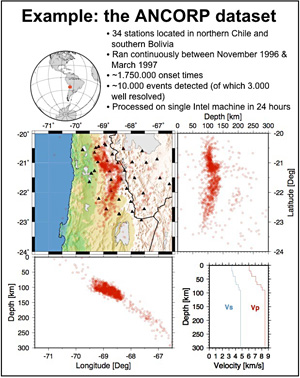
 |
|
Binder |
|||||
|
|
|||||
|
|||||
|
Once an event has been declared, subsequent picks are first tested to see if they can be associated with the existing event. A set of user-defined parameters determines if an arrival (P or S) can be considered to belong to an event. When no further arrivals can be associated with a particular event it is relocated one last time using the NonLinLoc algorithm. The Binder software has been used extensively, but it was initially tested against the ANCORP dataset (Northern Chile and Southern Bolivia) and a dataset collected from a dense array in Sumatra. The figures below show the Binder results using these two datasets. |
|||||
 |
 |
||||